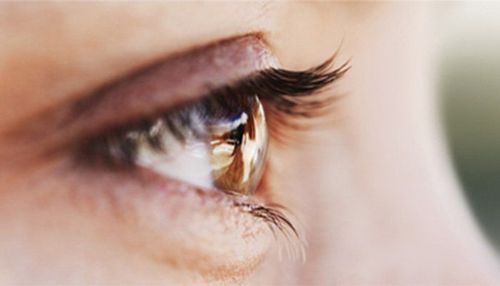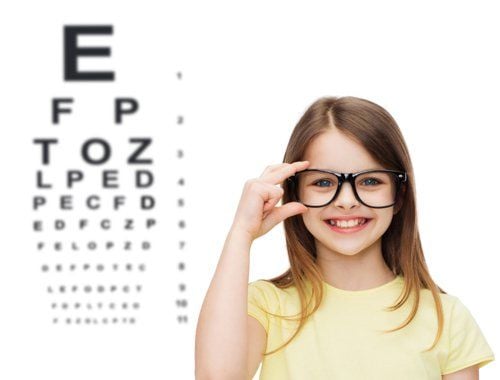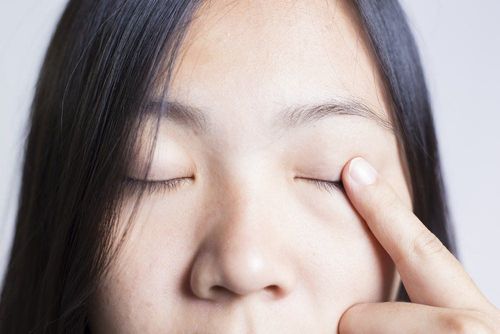This is an automatically translated article.
The article was professionally consulted by Specialist Doctor II Nguyen Thai Hung - Department of Medical Examination & Internal Medicine - Vinmec Danang International Hospital.Amblyopia (lazy eye) leads to vision loss, if not treated early, the working ability of the eyes can be permanently lost vision, greatly affecting the quality of life, work and study. ..
1. Amblyopia is a common problem
Amblyopia (also known as lazy eye, English name is amblyopia, or lazy-eye) is a condition of impaired vision, usually occurring in one eye due to abnormal development of vision during the first years of life. . Eyes with amblyopia tend to be slightly inward or outward.Amblyopia usually begins to appear between birth and 7 years of age. It is the leading cause of irreversible vision loss in children. This phenomenon rarely affects both eyes.
Early diagnosis and treatment of amblyopia helps prevent irreversible vision loss complications for children, limiting the risk of blindness. To improve vision in the weaker eye, the doctor may prescribe eye drops, regular glasses, contact lenses, or an eye patch.
2. Symptoms of amblyopia
Signs and symptoms of amblyopia include:One eye is slightly tilted inward or outward; The eyes do not work almost in sync; Decreased eyesight, unable to see far; Must squint or close eyes when looking away; The head is slightly tilted; Abnormal visual acuity results. Sometimes obvious vision loss cannot be recognized without an eye exam.
Parents should take their child to the doctor if they notice that their eyes appear uneven a few weeks after birth. Vision screening is especially important for children if there is a family history of refractive errors or other eye problems.
In general, all children between the ages of 3 and 5 should have a general eye exam for early detection of vision-related problems.

3. Causes of amblyopia
Amblyopia occurs due to abnormal development of vision in the first years of life, which alters the path of vision from the retina to the brain and inside the brain. As a result, one eye of the amblyopic patient receives less visual cues. The brain cannot fully perceive the images transmitted from the weaker eye. Eventually, the eyes' ability to work together is significantly reduced.Anything that impairs a child's vision or leads to astigmatism (crossed eyes) can cause amblyopia. In which, the most common causes include:
Eye muscle imbalance: The most common cause of amblyopia is an imbalance in the positioning muscles in the eye. This imbalance causes the eyes to deviate inward or outward, resulting in the two eyes gradually working unevenly with each other; Difference in visual clarity between the eyes (refractive amblyopia): A significant difference in binocular vision can lead to amblyopia. This is usually caused by farsightedness, sometimes by nearsightedness or an irregular surface curve of the eye (astigmatism). To correct these refractive problems, the doctor will usually have the child wear glasses or contact lenses. Some children have impaired vision due to a combination of astigmatism and refractive problems in the eye; Lazy eye due to lack of stimulation: Vision impairment in children can be caused by a number of problems related to lack of stimulation, such as cataracts. This requires urgent treatment to prevent permanent vision loss. This is the most severe type of amblyopia, with a high risk of blindness.
4. Risk factors for amblyopia
The risk of "lazy eye" is often higher in the following pediatric patients:Premature birth; Small size at birth; Family history of eye disease The child has a developmental delay.
5. Amblyopia if not promptly treated can lead to blindness
Amblyopia is a condition in which vision is impaired due to disturbances in visual conduction. Children with amblyopia can be cured if diagnosed early and treated properly. Amblyopia, if detected early in children under 5 years old, can be treated early by teaching children the method of seeing and observing. As for adults with amblyopia, the ability to cure is very little.If the cause of amblyopia is related to the entity, such as strabismus, refractive errors, cataracts or damage to the retina... it is necessary to have timely and reasonable interventions to improve visual acuity. eye force from a young age. In cases where the disease has persisted into adulthood, it is often not curable. Therefore, from an early age, if a child needs to be nearsighted or confused from a young age, parents should let the child wear glasses. For children with refractive errors as well as other vision diseases without glasses, even with timely treatment, the images transmitted to the retina will not be clear, over time will lead to amblyopia. There is even a risk of blindness.
6. How to keep eyesight healthy and limit amblyopia?

Regular eye exams; Quitting smoking; Wash your hands before putting contact lenses in your eyes; Use eye protection when necessary, such as when working with chemicals or sports activities that can affect the eyes; Wear sunglasses when out in the sun; Supplement with vitamins C, E, zinc and omega-3 fatty acids: These are nutrients that are very good for eye health, found in foods such as oysters, pork, fish oil, green vegetables, orange juice, legumes, peanuts and eggs; Avoid using computers or looking at screens (TVs, phones...) for a long time; Make sure the desk has a reasonable distance from the eyes; Give your eyes regular breaks by looking away from your screen or desk every 20 minutes or so, maybe looking out a window or going for a walk for at least 20 seconds. Taking care of eye health is an important part of general health. In order to detect the risk of amblyopia early, children should be examined to diagnose eye problems early, to avoid long-term progression of the disease, which can easily lead to unfortunate complications.
Eye specialties at Vinmec International General Hospital are the leading medical facilities in the country in the examination and treatment of eye-related diseases, with comprehensive quality in both expertise and medical services.
Eye specialist at Vinmec has comprehensive vision and eye health care functions for children, adults and the elderly including: refractive error check, laser treatment and surgery. In addition, the department also has the task of coordinating with other clinical departments in the treatment of pathological complications and eye injuries caused by accidents.
Besides, the team of Ophthalmologists here are experienced doctors who have implemented many types of surgery from routine to difficult surgeries, especially techniques that require aesthetics. . With enthusiasm and love for the profession, the team of doctors working at Vinmec always gives customers the best services with the highest service quality.
Specialist II Nguyen Thai Hung has 13 years of experience as an eye doctor at C Hospital Da Nang and Ngu Hanh Son General Hospital - Da Nang. Currently working as an Ophthalmologist at the Inter-specialty Clinic of Medical Examination - Internal Medicine, Vinmec International General Hospital Da Nang.
Please dial HOTLINE for more information or register for an appointment HERE. Download MyVinmec app to make appointments faster and to manage your bookings easily.
Reference source: Mayoclinic.org













